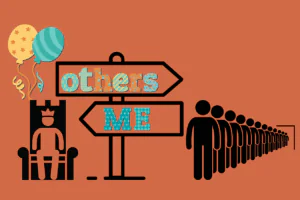
Have you experienced a traumatic event? Some people seem to easily overcome the impact of such an event, while others struggle to cope and are overwhelmed by the same situation. Their brain gets rewired to maladaptive physical and mental responses, and the body gets stuck in a constant stress response. Somatic Experiencing therapy addresses this physiological fixity. So, are you wondering “What is Somatic Experiencing therapy?”
Somatic Experiencing is a body-based (“somatic”) therapy that can effectively heal people from trauma by using bodily interventions. Therapists who practice SE and other somatic psychotherapies for trauma use mind-body exercises to release pent-up trauma from the mind and the body. These exercises work to complete incomplete fight or flight responses and thaw freeze responses. Through these exercises and by supporting a return to regulation in the Autonomic Nervous System, an SE therapist heals trauma from the inside out.
The goal is to help you develop new thinking patterns and behaviors to better respond to external and internal experiences as they come up. As Peter Levine, the developer of SE said in the Introduction to his seminal book Waking the Tiger, “… trauma is a fact of life. It does not, however, have to be a life sentence. Not only can trauma be healed but with appropriate guidance and support, it can be transformative.”
Development of the Somatic Experiencing Method
Peter Levine developed the Somatic Experiencing method through his multidisciplinary study of stress physiology, ethology, biology, neuroscience, psychology, and indigenous healing practices, along with over 50 years of successful clinical applications. It was among the first body-oriented approaches to the healing of trauma and other stress disorders.
Levine was struck by the fact that when facing a threat, all animals including humans are wired to unconsciously and automatically respond with certain somatic behaviors to protect themselves. These include fleeing, bracing, stiffening, and collapsing. The main difference between wild animals and humans is that animals naturally recover from these states. They do so by engaging in action patterns such as yawning, trembling, and shaking to release the excess energy generated by the threatening experience. However, humans tend to override these natural impulses. Therefore, they become easily overwhelmed and often end up with long lasting traumatic symptoms of hyperarousal, shutdown, and dysregulation.
Levine believes that the traumatic event and the story about it aren’t what causes long-lasting trauma. Rather it is the trapped and incomplete response to the perceived life threat that causes dysregulation in the autonomic nervous system (ANS). Somatic Experiencing therapy for trauma helps to access the body memory of the event, rather than the story. The SE practitioner will pay particular attention to helping your body complete the protective response that it was unable to complete in the traumatic event. It is not necessary to share the details of the trauma to do Somatic Experiencing.
Somatic Experiencing works to return regulation in the autonomic nervous system by supporting the natural back-and-forth rhythm between the sympathetic and parasympathetic branches of the ANS. An SE practitioner facilitates cycles where you sense your way through the normal variations of internal sensation. These can include contraction/expansion, pleasure/pain, and warmth/cold, or elements of the story like helplessness/support, high arousal/rest, etc. Like all SE interventions, this is done only at the level that you can handle without becoming overwhelmed. Titration, or the slow release of compressed survival energy, helps you to develop a greater capacity to handle stress and stay in the present moment going forward.
10 Key Somatic Experiencing Concepts
According to the Somatic Experiencing International Manual, these are main concepts in the Somatic Experiencing (SE) model.
- Trauma is a natural part of life. SE holds that trauma is a normal part of life. It is not a mistake, disease, or aberration.
- The body-mind is designed to heal. The view that the body-mind is intended to heal from intense and extreme experiences contrasts with the common belief that the effects of trauma are permanent.
- The focus in SE is on empowerment, mastery, expansion of choice, self-direction, and self-determination.
- The work is done within your range of resiliency. Staying within your range of resiliency means staying within your capacity to stay present and not become overwhelmed. Staying within your range facilitates the most efficient healing recovery. SE works with “just enough” activation to allow for deactivation, integration and/or completion within your current range of resiliency. This contrasts with approaches that push through “resistance” or promote emotional catharsis or painful physical discomfort.
- Symptoms represent bound activation in the nervous system. SE understands symptoms not to be of a disease state, even if they are associated with an actual disease. The methodology does not over- or underemphasize pathology. These symptoms can be used to show the SE practitioner exactly where to deactivate excess charge left over from a traumatic event. As the client tells their story in the session, the practitioner uses the story to track activation rather than to search for memories. SE works peripherally with the activation. The work is begun away from the area of greatest injury or activation. This allows reduction some of the bound charge, and builds enough stability to tolerate the strong sensations and emotions contained in the apex of the event.
- Somatic Experiencing works primarily with the “felt sense” and more secondarily with cognitive and emotional processes. The “felt sense” accesses the physical sensations, imagery, and motor patterns in a client’s experience of their story and the moment. In this way SE is considered a “bottom up” therapy that works with the sub-cortical regions of the brain more than “top down” cognitive talk therapies do.
- SE starts with ensuring stability and also helps the client recognize and expand resources. The SE practitioner stabilizes the client and ensures that they have sufficient resources to aid in healing before working with any traumatic material.
- The re-regulation of the Autonomic Nervous System is a focus. In Somatic Experiencing, Autonomic Nervous System dysregulation is an effect of trauma. It facilitates re-regulation of the Autonomic Nervous System by restoring gentle cycles of interplay.
- Somatic Experiencing works in the here and now. It focuses on the sensations, body memories, and resources occurring in the present.
- Expanding tolerance of your bodily sensations helps you to trust in the innate wisdom of the body, and begins to separate out the fear and terror experienced during the event.
Somatic experiencing therapy can benefit people who have unsuccessfully tried more traditional treatment methods after a traumatic experience. The work is slow, with care taken not to re-traumatize you.
Related Reading: What is SE Touch?
Because the work is so different than traditional talk therapy, the training for Somatic Experiencing is different as well. Practitioners of Somatic Experiencing who have the SEP credential have taken 36 days of training in this modality over a 3 year period. They have also had at least 12 hours of personal Somatic Experiencing sessions themselves in addition to at least 18 hours of case consultation in Somatic Experiencing.
Where Can I Find Somatic Experiencing Therapy Near Me?
You can find Somatic Experiencing practitioners through the Somatic Experiencing International website directory. If you’re in northern Illinois, we at Life Care Wellness have trained Somatic Experiencing Practitioners who can work with you to heal from trauma. Please reach out to us at our Glen Ellyn, Chicago (Jefferson Park), or Sycamore offices.
Rhonda Kelloway is the owner and principal therapist at Life Care Wellness, a group psychotherapy practice in Glen Ellyn, Sycamore, and Chicago (Jefferson Park neighborhood), Illinois. She is a trauma specialist utilizing a Somatic Experiencing framework to utilize the body’s wisdom in healing. She also uses EMDR and a variety of traditional psychotherapy approaches in her work. In addition to being a psychotherapist, she is a trained divorce and family mediator.




